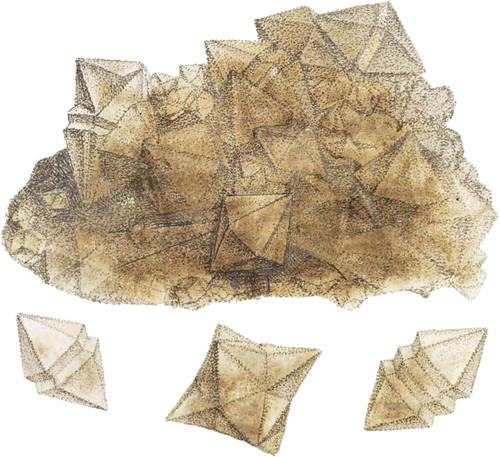 Enlarge
Enlarge
British Mineralogy
Carbonate of Barytes
We are obliged to F. Hall, Esq., of Arkendale near Richmond, Yorkshire, for the superb specimen from part of which this figure was taken: it is at first sight very interesting, as the crystallization is apparently a most perfect representation of the dodecaëdral Quartz, with the two hexaëdral pyramids meeting at their mutual base without any intermediate prism—a very rare circumstance in Quartz. On further examination we find a modification seemingly peculiar to itself, and which has never been recognised in Quartz, or in any other substance before: see the right and left hand figures. It is so new in its nature that an expression is wanted for it, as it is not what may be termed mackled, but may rather be called articulated or jointed. These figures have one or two joints, lengthening the crystal endways without a tendency to continuing at the mutual bases, or filling up the interruption so as to form the plane of the column; the vacancy is just contrary to those of the Carbonate of Lead, which it somewhat resembles in the first instance: see tab. 89, 90, 91, and may be of much utility for external discrimination. We have been able to by this specimen to determine partly the measure, and compare with Quartz—the incidence of one of the pyramids of Quartz upon the other measuring, according to Haüy, 103° and some seconds, and we find it in Carbonate of Barytes to measure above 126°.
The Carbonate of Barytes has, in this specimen, a tendency to crystallize in groups, in a stellated manner: see the middle figure. The whole of the Carbonate of Barytes is chiefly formed on Carbonate of Lime, and is partly covered with Sulphate of Barytes in fine spiculæ. Some of the Carbonate of Lime is in Garnet dodecaëdrons with short columns, an uncommon form for Carbonate of Lime: see tab. 128, right hand outline.

